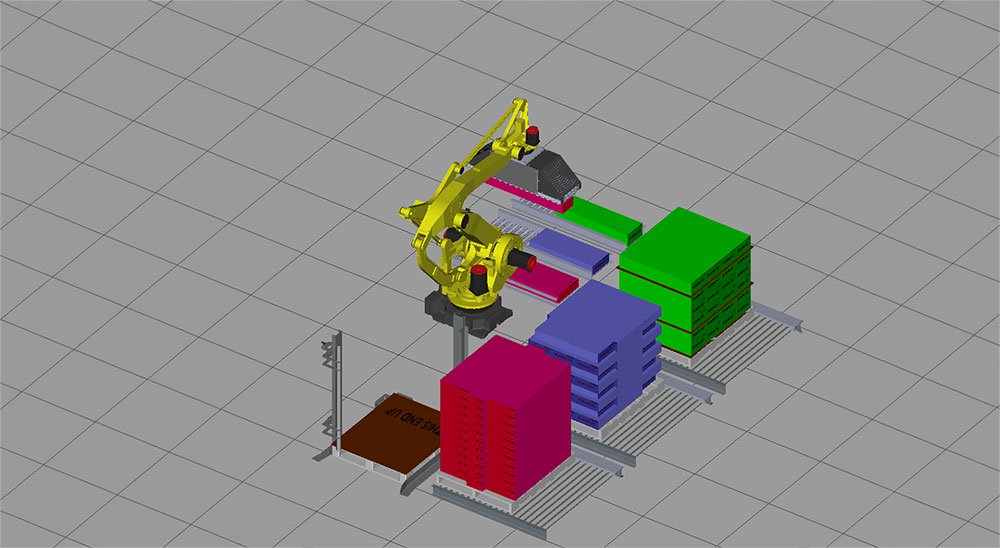
Maximizing Efficiency: The Critical Role of Robotic Simulations in System Design
Michael Cunningham | 18 September 2024
In today's fast-paced, technology-driven world, businesses are increasingly relying on automation to meet customer demands, especially during peak seasons. Whether you're in manufacturing, logistics or any other industry that relies on automated systems, the ability to handle spikes in demand efficiently can make or break your operation. One essential step in ensuring your system can perform under pressure is conducting thorough robotic simulations before installation.
The Importance of Robotic Simulations
Robotic simulations allow you to model and test your system's design in a virtual environment before it goes live. This step is crucial because it enables you to identify potential bottlenecks, optimize workflows and ensure that your system can scale up effectively during peak periods. By simulating real-world scenarios, you can assess whether your design meets the necessary performance criteria and make adjustments long before installation, saving time, money and resources.
Preparing for Peak Seasons
Peak seasons are particularly challenging for automated systems. The increased workload can strain your robots, leading to potential failures or inefficiencies if the system isn’t adequately prepared. By running simulations, you can predict how your system will respond to these challenges and tweak your design accordingly. This proactive approach helps prevent costly downtime and ensures that your operation runs smoothly, even during the busiest times of the year.
Optimizing System Performance
Robotic simulations are invaluable for fine-tuning your system's performance. By modeling different scenarios, you can identify areas where efficiency can be improved, whether it's in the speed of a robotic arm, the coordination between multiple robots or the timing of tasks in a production line.
For example, suppose your system involves a robotic arm that picks and places items on a conveyor belt. Through simulation, you might discover that the arm's current speed causes occasional delays, especially during peak production times. By adjusting the speed settings or altering the arm's movement path, you can eliminate these delays, ensuring a smoother flow of products.
The challenge of inefficient production line timing might seem out of scope, but for a systems integrator, chances are the majority of the automated system is in their control. Meaning, a robotic simulation could lead to impactful changes made to conveyor logic, sortation flow or picking rates upstream or downstream of the robotic system.
Extending System Availability
Robotic simulations allow you to experiment with different configurations without the risk of real-world consequences. By making these adjustments in the virtual environment, you can ensure that your system operates at peak performance when it’s needed most, ultimately reducing wear and tear on your equipment and extending its lifespan.
Improving Operator Understanding
Another benefit of a robotic simulation is increased team knowledge and acceptance of the system. A visual representation of the automated process can help employees better comprehend the new operations and recognize their role in it. Quicker adaption of robotic systems increases usage and ROI.
Detailed Simulations and Successful Installations
Incorporating robotic simulations into your system design process is not just a best practice; it’s a necessity in today’s competitive landscape. By ensuring your system is ready to handle peak seasons before installation, you can avoid costly surprises, improve efficiency and maintain a high level of customer satisfaction. Reach out to one of our robotic experts today to see how you can future-proof your operations!
Michael Cunningham is a robotics inside application engineer at Bastian Solutions' St. Louis, MO office. He has a Bachelor of Science degree in Mechanical Engineering from the University of Toledo. As an inside applications engineer, Michael works with clients on the requirement analysis, design, budgeting, proposal, and implementation of robotic material handling systems.
Comments
No comments have been posted to this Blog Post
Leave a Reply
Your email address will not be published.
Comment
Thank you for your comment.